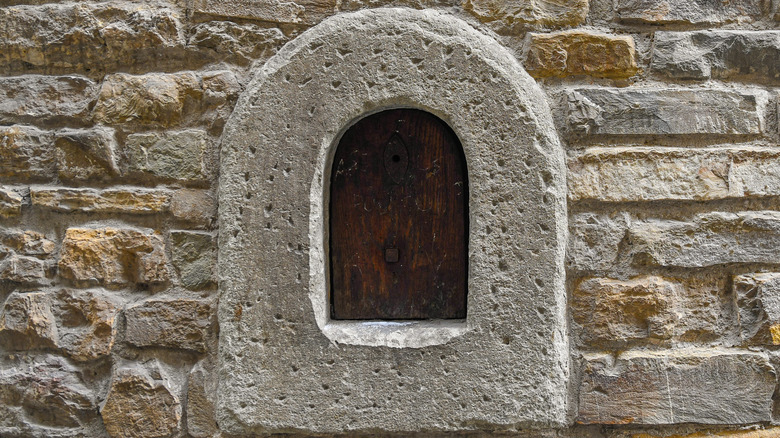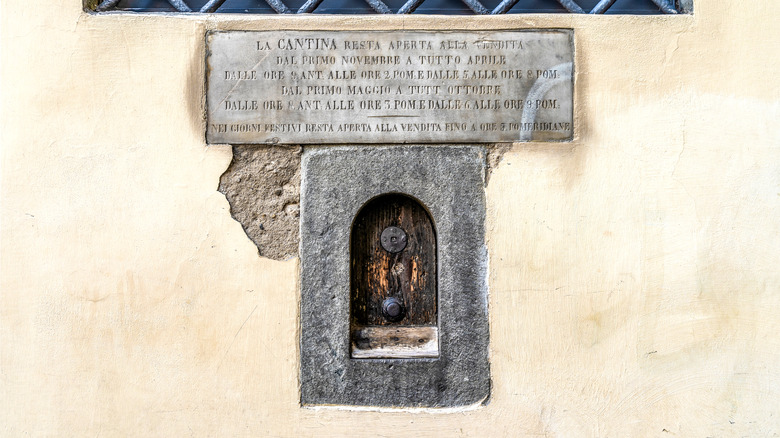The Origin Of Florence, Italy's Wine Windows
Florence, Italy, has a substantial history of winemaking. According to Tuscany Wine Tours, the region has been dedicated to wine agriculture for over 3,000 years, all the way back to the Etruscan times. Since then, wine grapes have been cultivated under both the Greek and Roman empires and survived the Middle Ages and Renaissance Period to make it to the present day, where the viticultural areas near Florence: Chianti, Montalcino, and Montepulciano are all highly respected and incredibly sought after for their product.
Florence is Tuscany's capital city, and Lazenne says that it nurtures and celebrates all the Italian wine industry has to offer. In the 14th century, 8 million gallons of wine were cycling annually through the city, and the Sangiovese grape has been cultivated in the wine country for as long as anyone can remember. The wine just keeps getting better and better, and Super-Tuscan wines are being made with a gusto never before seen. Tuscany itself has tied for the most DOCG (Denominazione di Origine Controllata e Garantita) designations in Italy, and the city of Florence is where much of the local wine is sold or distributed (via Drink Stack). But Florence isn't the city of wine shops; it is the city of wine windows.
What are wine windows?
Wine windows are, at their heart, exactly what they sound like: windows for wine, and they have been around for a very long time. If you are wandering through Florence, you might see a few random windows lining the walls of the city. They were created as far back as 1559, when Cosimo de' Medici, the ruler of Florence, allowed wealthy, noble families to sell wine they produced out of their homes (via Atlas Obscura).
Devour Tours says that this allowed noble families to avoid the additional taxes of opening a wine shop to sell their bottles, but in the 17th century, these wine windows served another purpose. Between the years 1630-1633, an epidemic hit the city, and these wine windows became the perfect way for residents to safely purchase wine without coming in close contact with another person. According to Food & Wine, the Associazione Buchette del Vino (Wine Windows Association) has tried to keep track of exactly how many wine windows were built in the city during these historic periods though many have been destroyed over the years. Currently, the number stands at around 150 within Florence and at least another hundred throughout the region. In 2020, when the initial waves of the COVID-19 pandemic hit Italy, some of these windows were re-opened and used once again for their intended purpose: passing wine across the sill.

